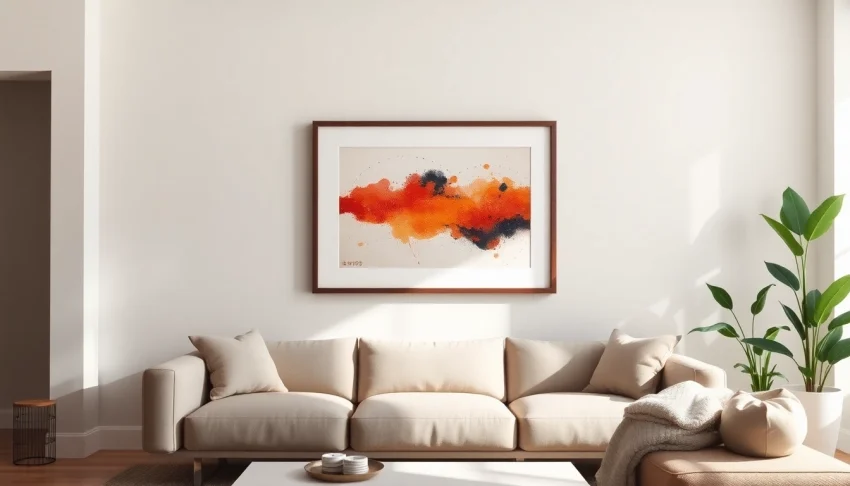Understanding the 20×30 Frame: Dimensions and Specifications
What is a 20×30 Frame?
A 20×30 frame is designed to accommodate artwork, photographs, or posters measuring 20 inches in width and 30 inches in height. This standard size is often chosen for its versatility in displaying various types of artwork, including photographs, prints, and more. When considering a 20×30 frame, it’s essential to understand not only the dimensions but also the finished frame size, which is typically larger due to the frame’s structure.
Common Uses for 20×30 Frames
20×30 frames are particularly popular for a variety of applications, such as:
- Posters and Advertising Material: Often used for movie or concert posters, these frames provide a professional presentation.
- Photography: 20×30 frames are ideal for large family photos, group portraits, or landscape photography, making them a staple in homes and galleries alike.
- Art Prints: Artists frequently produce prints in these dimensions, allowing for optimal display of their work.
- Event Memorabilia: From wedding photos to event posters, this size is perfect for showcasing significant moments.
Material Options for 20×30 Frames
When selecting a 20×30 frame, material plays a vital role in both aesthetics and durability. Common materials include:
- Wood: A classic choice offering versatility in finish and style, wood frames tend to add warmth to the displayed art.
- Metal: Sleek and modern, metal frames are often more durable and resistant to wear.
- Composite Materials: Wood composite frames can be a more affordable option while still providing an upscale look.
- Plastic: Lightweight and often cost-effective, plastic frames are ideal for casual displays.
Choosing the Right 20×30 Frame for Your Artwork
Consider the Art Style and Frame Design
When selecting a frame, the style of your artwork should be a primary consideration. For contemporary pieces, sleek, minimalistic frames may provide a perfect contrast, whereas traditional artwork might benefit from ornate, detailed frames. Consider:
- The existing decor of your space.
- How the frame complements or contrasts with the colors in the artwork.
- The thickness of the artwork and any matting that may be included.
Choosing Between Matting and Non-Matting
Matting can serve both functional and aesthetic purposes. Here’s how to decide:
- Matting: Adds depth and can help draw attention to the art. It’s particularly beneficial for photographs and delicate prints.
- Non-Matting: Offers a streamlined look, which may work best for bold or oversized pieces.
Frame Colors and Finishes: How to Match with Decor
Color and finish can significantly impact the perception of your artwork:
- Black Frames: Offer a modern and sophisticated look, suitable for nearly any artwork.
- White Frames: Create a fresh, clean aesthetic that complements light and airy decorations.
- Natural Wood Finishes: Provide warmth and can bring a rustic charm to your space.
- Metallic Finishes: Reflect light and can add a glamorous touch to your decor.
Where to Buy Quality 20×30 Frames
Top Retailers for 20×30 Frames
When looking for a quality 20×30 frame, consider reputable retailers that specialize in home décor and artwork display. Some highly recommended options include:
- Amazon: Provides a vast array of frame styles and materials, often with customer reviews to guide selections.
- Walmart: Offers budget-friendly options and a variety of 20×30 frames catering to different styles.
- Michaels: A good source for custom and ready-made frames, particularly for arts and crafts enthusiasts.
Online vs. Brick-and-Mortar Shopping
Both shopping methods have their advantages. Online shopping offers convenience and a larger selection without needing to travel. In contrast, visiting a brick-and-mortar store allows you to physically inspect frame quality and colors, ensuring a better match for your decor.
Finding Discounts and Best Deals on Frames
Consider these tips for finding the best deals on 20×30 frames:
- Sign up for newsletters from online retailers for exclusive discounts.
- Visit stores during sales events, such as holidays or back-to-school sales.
- Explore clearance sections for discounted items.
How to Hang and Display Your 20×30 Frame
Tips for Wall Placement and Arrangement
Proper placement of your framed artwork can enhance your living space:
- Hang at eye level for optimal viewing.
- Consider grouping frames for a gallery-like effect, mixing sizes for visual interest.
- Ensure the frame complements surrounding decor and doesn’t overwhelm the space.
Mounting Options for 20×30 Frames
Different mounting options affect both appearance and security:
- D-Rings: Easy to install and adjust; suitable for smaller frames.
- Wire Hanging: Allows slight adjustments once hung and works well for larger frames.
- Picture Hangers: For more stability, especially in high-traffic areas.
Adjusting Lighting to Enhance Display
The right lighting can truly elevate your framed artwork:
- Use spotlights or wall sconces for focused illumination.
- Avoid direct sunlight to prevent fading, especially for colored prints.
- Consider using LED lights for a long-lasting and energy-efficient option.
Maintaining and Caring for Your 20×30 Frame
Cleaning Your Frame: Best Practices
To ensure your 20×30 frame stays in excellent condition, follow these cleaning tips:
- Dust the frame regularly with a soft, dry cloth to prevent buildup.
- For wooden frames, consider using a wood polish to maintain shine.
- For glass frames, use a glass cleaner with a microfiber cloth for streak-free results.
Preventing Damage to Artwork within the Frame
Protecting the art itself is crucial for longevity:
- Ensure the artwork is positioned away from direct sunlight to prevent fading.
- Use acid-free mats and backing to avoid damage over time.
- Check the frame periodically for signs of wear or damage that may impact the artwork.
When to Replace or Reframe Your Art
Over time, you may find it necessary to replace or reframe your artwork:
- If the frame is damaged or showing significant signs of wear, it can affect the artwork.
- Consider reframing if the piece no longer complements your decor style.
- When changing the artwork itself, always assess whether the old frame still suits the new piece.
